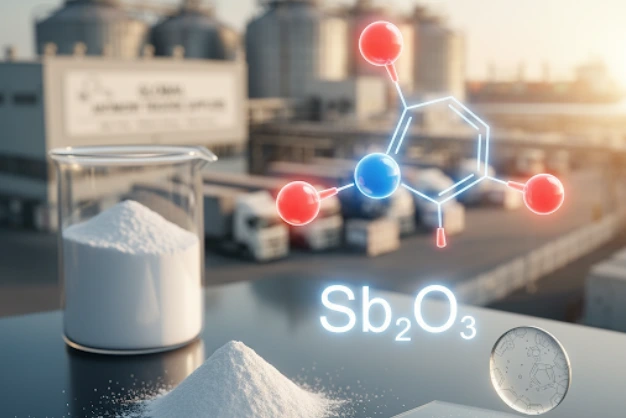TABLE OF CONTENTS
TABLE OF CONTENTS
Definition and Chemical Composition: Baking Soda vs Baking Powder
Baking Soda
Baking soda, known chemically as sodium bicarbonate, is a single-ingredient leavening agent with the chemical formula NaHCO₃. It is a white crystalline powder that is alkaline in nature. When baking soda comes into contact with an acid, it reacts immediately, producing carbon dioxide gas. This gas forms bubbles in the dough or batter, causing it to rise. Common acidic ingredients that activate baking soda include vinegar, lemon juice, buttermilk, and yogurt.
Baking Powder
Baking powder is a compound leavening agent made up of three key ingredients: baking soda (sodium bicarbonate), an acidifying agent (typically cream of tartar), and a drying agent (usually cornstarch). The presence of both an acid and a base in baking powder means it can produce carbon dioxide gas on its own when mixed with a liquid. Most baking powders are double-acting, meaning they produce gas twice: once when they are mixed with a liquid and again when exposed to heat during baking. This two-stage reaction helps to create a more consistent rise in baked goods.
In summary, while baking soda is a single compound that requires an acid to activate, baking powder is a pre-mixed combination of baking soda, an acid, and a stabilizer, designed to produce gas in two stages during the baking process. Understanding these differences is crucial for selecting the appropriate leavening agent for your baking needs.
How It Works: Baking Soda vs Baking Powder
Baking Soda
Baking soda, or sodium bicarbonate, is a basic compound that requires an acidic component to activate it. Here’s how it works:
Activation: When baking soda is mixed with both an acid (like vinegar, lemon juice, buttermilk, or yogurt) and a liquid, it starts a chemical reaction. This reaction is immediate and produces carbon dioxide gas (CO₂).
Gas Production: The carbon dioxide gas forms bubbles in the batter or dough. These bubbles expand when heated, causing the baked goods to rise and become light and fluffy.
Timing: Because the reaction starts as soon as the baking soda is moistened and combined with an acid, it’s important to bake the mixture immediately to take full advantage of the gas production.
Baking Powder
Baking powder contains both the base (sodium bicarbonate) and an acid (usually cream of tartar) along with a drying agent (such as cornstarch) to prevent premature reactions. Here’s how it works:
First Reaction: When baking powder is mixed with a liquid, the acid and base react to produce carbon dioxide gas. This initial reaction starts the leavening process.
Double-Acting: Most baking powders are double-acting, meaning they have two stages of gas production. The first stage happens at room temperature when the powder is mixed with wet ingredients.
Second Reaction: The second stage occurs when the mixture is heated in the oven. The heat further activates the remaining acid and base, producing additional carbon dioxide gas and contributing to a further rise in the baked goods.
Consistency: This two-step reaction ensures a more consistent rise and texture, as the batter or dough continues to expand during baking.
In summary, baking soda needs an acid and a liquid to start producing gas immediately, making it ideal for recipes that already include acidic ingredients. Baking powder, with its built-in acid, starts reacting when mixed with a liquid and continues to react upon heating, providing a more controlled and prolonged rise. Understanding these mechanisms helps in choosing the right leavening agent for different types of baked goods.
Uses in Baking: Baking Soda vs Baking Powder
Baking Soda
Baking soda is a powerful leavening agent used in recipes that include acidic ingredients. Here’s how it is typically used in baking:
Acidic Recipes: Baking soda is ideal for recipes that already contain acidic components such as buttermilk, yogurt, vinegar, lemon juice, or molasses. The acid activates the baking soda, resulting in a quick rise.
Quick Breads and Cookies: Commonly used in quick breads, muffins, and cookies, baking soda helps these baked goods rise quickly and gives them a light, airy texture.
Color and Texture: Baking soda can also affect the color and texture of baked goods. For instance, it promotes browning, leading to a desirable golden color in cookies and cakes.
Bitter Taste: It’s important to use the correct amount of baking soda. Too much can result in a soapy, bitter taste due to the unreacted bicarbonate.
Baking Powder
Baking powder is versatile and can be used in a variety of recipes, especially those that do not contain acidic ingredients. Here’s how it is typically used in baking:
Neutral Recipes: Baking powder is perfect for recipes that do not have natural acids, such as plain cakes, biscuits, and pancakes. Since it contains both an acid and a base, it doesn’t require additional acidic ingredients to activate.
Double-Acting: The double-acting nature of most baking powders means they release gas in two stages: when mixed with liquid and when exposed to heat. This ensures a steady and consistent rise, making it ideal for cakes and other delicate baked goods.
Consistency and Texture: Baking powder helps achieve a fine, tender crumb in cakes and quick breads. It ensures that the baked goods rise evenly and have a uniform texture.
Recipe Dependence: Since baking powder contains both acid and base, it is self-contained and does not rely on other ingredients to work. This makes it easy to use and reliable in a wide range of recipes.
Practical Examples
Baking Soda: Chocolate chip cookies, banana bread, and buttermilk pancakes.
Baking Powder: Classic pound cake, scones, and fluffy pancakes.
In summary, baking soda is best for recipes with acidic ingredients and provides quick leavening and browning. Baking powder is more versatile, suitable for recipes without acidic components, and provides a more controlled and consistent rise. Understanding the specific uses of each leavening agent ensures successful baking results.
Benefits and Limitations: Baking Soda vs Baking Powder
Baking Soda
Benefits
Powerful Leavening Agent: Baking soda is highly effective as a leavening agent, producing a quick rise in doughs and batters. This is particularly beneficial for recipes requiring immediate gas production to achieve the desired texture and volume.
Enhances Browning: Baking soda promotes browning, giving baked goods a beautiful golden color. This is especially useful for cookies, muffins, and some quick breads that benefit from an appealing, caramelized exterior.
Crisp Texture: In addition to leavening, baking soda can help create a crisp texture in baked goods, making it ideal for cookies and some types of bread.
Limitations
Requires Acid: Baking soda needs an acidic ingredient to activate. Without an acid, it will not produce carbon dioxide gas, leading to flat, dense baked goods. This limits its use to recipes that contain acidic components.
Potential for Bitter Taste: Using too much baking soda can result in a bitter, soapy taste due to the unreacted bicarbonate. Precise measurement is crucial to avoid this unpleasant flavor.
Immediate Reaction: The reaction of baking soda with an acid starts immediately upon mixing. Therefore, the batter or dough must be baked promptly to take advantage of the leavening action. Delays can result in less effective rising.
Baking Powder
Benefits
Convenience: Baking powder contains both an acid and a base, making it a self-contained leavening agent. This simplifies recipes, as there is no need for additional acidic ingredients to activate the leavening process.
Double-Acting Formula: Most baking powders are double-acting, meaning they release carbon dioxide gas twice—once when mixed with liquid and again when exposed to heat. This provides a more consistent and reliable rise, especially in delicate cakes and pastries.
Versatility: Baking powder can be used in a wide range of recipes, including those without acidic ingredients. This makes it a versatile choice for various baked goods, from cakes to biscuits.
Limitations
Less Browning: Unlike baking soda, baking powder does not promote browning to the same extent. This can result in baked goods that are lighter in color, which may not be desirable for some recipes.
Weaker Leavening Power: Baking powder is generally less potent than baking soda. In recipes where a strong rise is needed, larger quantities of baking powder may be required, which can affect the overall flavor and texture of the baked goods.
Potential for Residual Taste: If too much baking powder is used, it can leave a slight metallic or bitter taste in the final product. Accurate measurement is essential to avoid this issue.
Baking soda and baking powder each have their own benefits and limitations. Baking soda is a powerful leavening agent that requires an acid to activate, promotes browning, and is best for recipes with acidic ingredients. However, it can impart a bitter taste if used excessively and must be baked immediately after mixing. Baking powder, on the other hand, is convenient and versatile, offering a consistent rise with its double-acting formula, but it provides less browning and has weaker leavening power. Understanding these differences helps in choosing the appropriate leavening agent for different baking needs, ensuring optimal results in the kitchen.
Key Differences Between Baking Soda and Baking Powder
Chemical Composition
Baking Soda
Ingredient: Sodium bicarbonate (NaHCO₃).
Description: A single-ingredient leavening agent that is alkaline in nature.
Baking Powder
Ingredients: Sodium bicarbonate (baking soda), an acidifying agent (usually cream of tartar), and a drying agent (usually cornstarch).
Description: A compound leavening agent that contains both an acid and a base, along with a stabilizer to prevent premature reactions.
Reaction Process
Baking Soda
Activation: Baking soda requires an acid and a liquid to activate. When mixed with an acidic ingredient and moisture, it produces carbon dioxide gas (CO₂).
Immediate Reaction: The reaction starts immediately upon mixing, releasing gas that causes the batter or dough to rise quickly.
Baking Powder
First Reaction: When baking powder is mixed with a liquid, the acid and base react to produce carbon dioxide gas. This starts the leavening process.
Double-Acting: Most baking powders are double-acting, meaning they release gas twice: first when mixed with liquid and again when exposed to heat. This two-stage reaction helps ensure a consistent rise during baking.
Acidity Requirements
Baking Soda
Need for Acid: Baking soda must be combined with an acidic ingredient to produce carbon dioxide gas. Common acids used in baking include vinegar, lemon juice, buttermilk, and yogurt.
Recipe Consideration: Recipes using baking soda need to include an acid to ensure proper activation and leavening.
Baking Powder
Built-In Acid: Baking powder contains both an acid (usually cream of tartar) and a base (baking soda), making it self-sufficient for leavening without additional acidic ingredients.
Versatility: This makes baking powder more versatile and easier to use in a variety of recipes that do not naturally contain acidic components.
Strength and Usage
Baking Soda
Strength: Baking soda is about three to four times stronger than baking powder.
Usage: Typically used in recipes with acidic ingredients to balance the alkalinity and activate the leavening process.
Measurement: Precise measurement is crucial to avoid a bitter taste.
Baking Powder
Strength: Baking powder is less potent than baking soda and requires larger quantities to achieve the same leavening effect.
Usage: Used in recipes without acidic ingredients. Provides a consistent rise due to its double-acting formula.
Measurement: Typically used in larger amounts than baking soda. Accurate measurement ensures proper leavening and avoids any residual metallic taste.
Substitution Guidelines
Substituting Baking Soda with Baking Powder: If a recipe calls for baking soda and you only have baking powder, you can substitute, but you will need more baking powder. Use about three times the amount of baking powder as baking soda. Additionally, you may need to reduce or eliminate any added acidic ingredients in the recipe.
Example: If a recipe calls for 1 teaspoon of baking soda, use 3 teaspoons of baking powder instead.
Substituting Baking Powder with Baking Soda: If a recipe calls for baking powder and you only have baking soda, you can substitute, but you need to add an acid to activate the baking soda. For every teaspoon of baking powder, use 1/4 teaspoon of baking soda and add 1/2 teaspoon of an acid such as vinegar or lemon juice.
Example: If a recipe calls for 1 teaspoon of baking powder, use 1/4 teaspoon of baking soda and 1/2 teaspoon of vinegar or lemon juice.
Understanding these key differences in chemical composition, reaction processes, acidity requirements, and strength helps in selecting the appropriate leavening agent for different recipes. This ensures that baked goods rise properly and have the desired texture and flavor.
Common Questions and Troubleshooting
Can They Be Substituted?
Guidelines for Substitution and Adjustments Needed
Substituting Baking Soda with Baking Powder
Increase Quantity: Baking soda is about three times stronger than baking powder. If substituting baking powder for baking soda, you will need to use approximately three times the amount of baking powder.
Example: If a recipe calls for 1 teaspoon of baking soda, use 3 teaspoons of baking powder instead.
Adjust Acidity: Since baking powder already contains an acid, you may need to reduce or eliminate other acidic ingredients in the recipe to avoid an overly acidic taste.
Substituting Baking Powder with Baking Soda
Add Acidic Ingredient: Baking soda requires an acid to activate. For every teaspoon of baking powder, use 1/4 teaspoon of baking soda and add 1/2 teaspoon of an acid (such as vinegar or lemon juice).
Example: If a recipe calls for 1 teaspoon of baking powder, use 1/4 teaspoon of baking soda and 1/2 teaspoon of vinegar or lemon juice.
Monitor Taste: Be cautious with the amount of baking soda used, as too much can result in a bitter taste.
Common Baking Issues
Troubleshooting Flat or Overly Dense Baked Goods
Flat Baked Goods
Insufficient Leavening Agent: Ensure the correct amount of leavening agent is used. Using too little baking soda or baking powder can result in flat baked goods.
Expired Leavening Agent: Check the expiration date of your baking soda or baking powder. Expired leavening agents lose their potency and may not provide the desired rise.
Immediate Baking: Baking soda starts reacting as soon as it is mixed with an acid and liquid. Bake the batter immediately to utilize the gas produced for rising.
Overly Dense Baked Goods
Too Much Leavening Agent: Using too much baking soda or baking powder can cause the batter to rise too quickly and then collapse, leading to dense baked goods.
Improper Mixing: Over-mixing the batter can cause the gas bubbles to escape, resulting in dense textures. Mix the batter just until the ingredients are combined.
Incorrect Oven Temperature: Ensure your oven is preheated to the correct temperature. Baking at too low a temperature can prevent proper rising.
Tips for Achieving the Best Rise and Texture
Accurate Measurement: Use precise measurements for baking soda and baking powder. Too little or too much can affect the rise and texture of your baked goods.
Fresh Ingredients: Always use fresh baking soda and baking powder. Store them in a cool, dry place and check expiration dates regularly.
Proper Mixing: Combine the dry ingredients (including the leavening agents) thoroughly before adding wet ingredients. This ensures even distribution and consistent rising.
Bake Promptly: For recipes using baking soda, bake the batter immediately after mixing to take advantage of the immediate gas production.
Oven Temperature: Preheat your oven and bake at the recommended temperature. Avoid opening the oven door frequently, as this can cause temperature fluctuations and affect rising.
By understanding the substitution guidelines, troubleshooting common issues, and following best practices, you can achieve the desired rise and texture in your baked goods, ensuring consistent and successful baking results.
Contact Us
Questions or looking for a quote?





